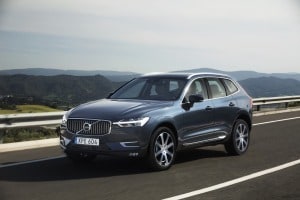What Is Behind the January Sales Surprise?
Most forecasters (including Edmunds) were expecting January sales to end up in the mid-13m SAAR range. Instead we saw sales come in at almost 14.1m SAAR. In fact, it was the best SAAR performance since August 2009.
How did forecasters get this so wrong? And more importantly, what does it mean for the balance of 2012?
Optimists point to factors like "pent up demand." The idea is that buyers, who deferred the purchase of a new vehicle during the downturn, must at some point get a new vehicle. The concept has merit; our estimates suggest that there are around 4M vehicle buyers that could be returning to market at some point. These sales would be on top of whatever the "normal" sales level might be at that time. So it is conceivable that we are due for a rapid acceleration in the pace of auto sales recovery. (Although I have to point out if/when these buyers do return, we need to be ready to recognize them as a one-time effect and not establishing a new normal rate of sales.)
So that is the key question: Is a release of pent up demand what's behind the January sales surprise? While I would like to think so, I am cautious and here's why:
First, when you dig into the numbers, one factor keeps jumping out. Fleet sales accounted for an unusually high percentage of the reported sales. For Mazda, fleet was over 45% of sales; for the Detroit automakers, fleet was almost 30%; for Nissan, it was over 35%; and for Toyota it was almost 20%.
Overall, fleet sales accounted for 24% of total January sales. It hasn't been this high since March 2010. In fact, it is this bump in fleet sales that accounts for the forecast errors. If fleet sales were "normal" (around 20%), January SAAR would have come in at 13.4m.
Fleet sales need to be viewed in context. One view is that they are a positive leading indicator. Companies feeling good about the economy and their futures are more likely to rotate fleets.
On the other hand, car companies, who must estimate retail demand months in advance when determining production, may have gotten it wrong. Fleet sales are a sensible way to move this excess production. (While suffering none of the huge incremental costs associated with most consumer incentives.)
Complicating the picture is the fact that car companies seem determined to pull back on retail incentives. January was no exception as we saw overall incentives drop to $2,206 from $2,561 a year earlier. This is a continuation of a trend that began in September of 2004 when we saw incentives hit $3,168. Lower incentives certainly help car company profits, arguing that any extra production should be sold to fleet buyers. But it should also be pointed out that lower incentives are effectively a price increase for consumers. High prices for new vehicles help support used vehicle sales and can also lower overall new vehicle sales volume.
Digging more into the data, there is a second factor to consider. Despite the headline grabbing SAAR number of 14.1m, actual unit sales were the lowest since, well, January 2011.

January sales typically suffer, both from a pull back after strong year-end sales in December and from consumer reluctance to venture out to vehicle shop in bad weather.
This year, January weather was unusually mild, suggesting that seasonal adjustments may be too extreme. And I noted last week (Link) some concerns about the unwelcome biases that may be present in seasonal adjustments during times of unusual volatility. Netting this out, everyone likes to quote SAAR, though I would be careful about reading too much into a single, or even a few months' figures.
The final factor to consider is the old story we have been telling about the sales that were deferred last summer when prices were high and selection was poor. (After the earthquake in Japan.) Our estimates are that these buyers began to return to the market towards the end of last year and helped fuel the sales climb. But we estimate that around 50,000 sales remain. The lift these deferred sales are providing is diminishing, but should still account for some of the sales strength we saw in January.
So, are we witnessing the beginnings of a sustained, accelerating sales rebound? Or was January boosted by anomalies and non recurring factors? February will provide some clarity. Consider this: Unit sales will have to reach 1.08m to equal January's 14.1 SAAR. If we get even close — and fleet drops to a more normal 20% — it will suggest a fundamental improvement in the market. And analysts will be sent scrambling to update their totals for the full year.















